[Atari, Avalon Hill]
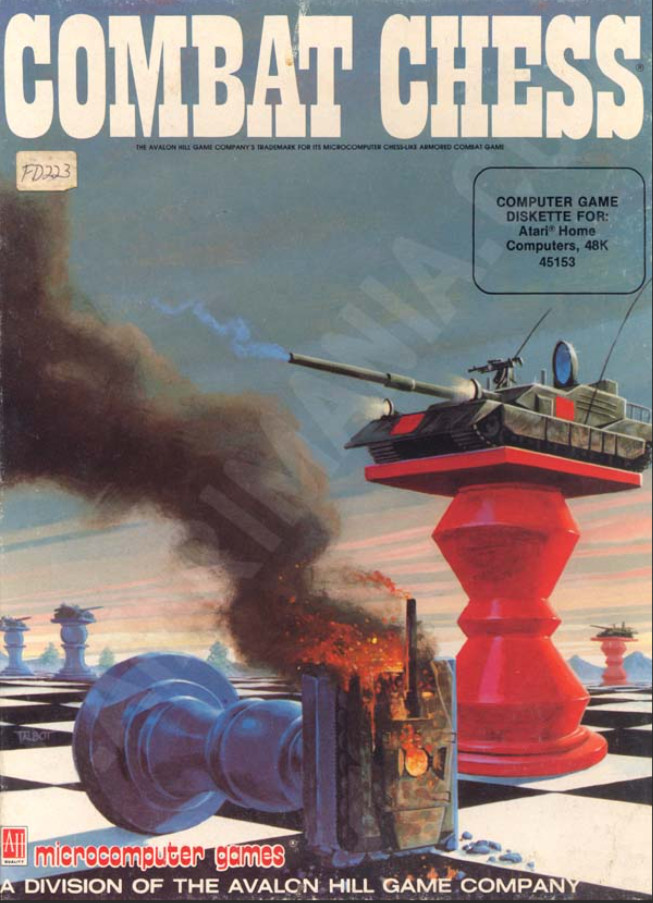
Chess’s prestige towers above other boardgames: it is considered not a mere game but a test of intelligence, so much so that during the Cold War the two blocs rivaled on who had the best Chess players. It is wherefore not surprising that game developers tried to piggy-bank on this reputation to convey how special their games were – no one tries to sell a Battle Backgammon or a Tactical Tic-Tac-Toe, but I have met in my life plenty of games claiming to be a more interesting variant of Chess. On this blog, I have already covered the famous Archon and the less famous Battle 1917, now it is the turn of Avalon Hill’s Combat Chess, which tries to add tanks to the ancient formula. Spoiler: the transplant did not take, and the ruleset has a multiple personality disorder.
The disorder starts before moving the first piece: the game proposes 10 different maps: 5 are classical “tactical wargame” maps with forests, rivers, bridges and mountains, and 4 are abstract chessboards with coloured tiles. The last one is a “night” version of the first map where the enemies are invisible, including when they are moving – I don’t know how anyone would want to play that.
For this battle, I went with the first map. I am playing the red, starting in the top-left corner. The computer starts on the other side of the map.
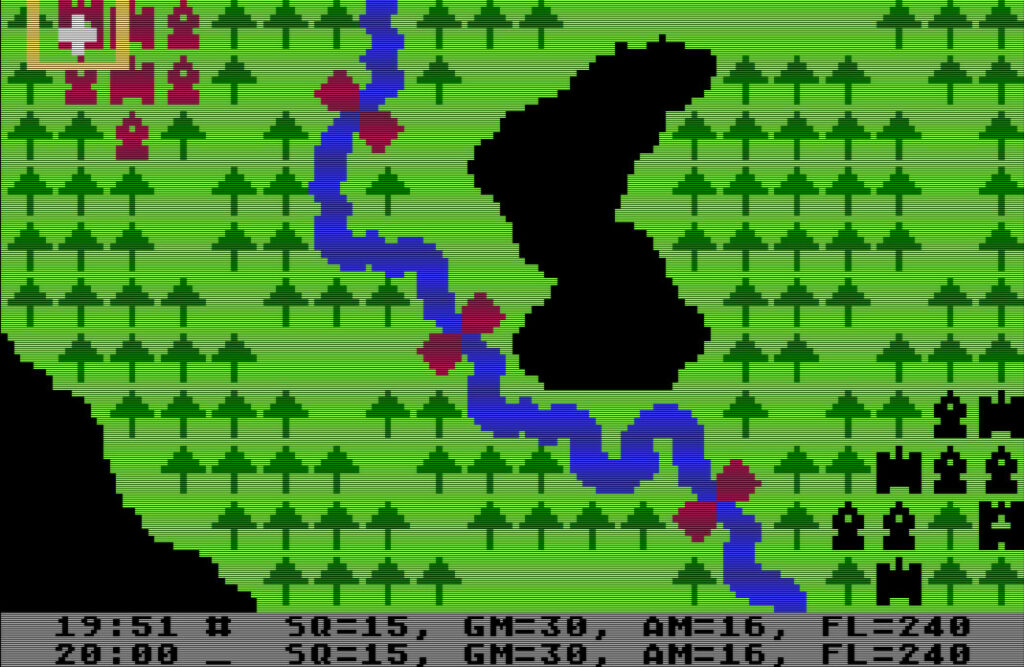
There are 3 types of pieces/units in Combat Chess:
- The armoured car moves fast, but is relatively fragile. Its gun is also short-range and lacks ammunition. I start with 4 of them and the AI with 5.
- The tank has average speed, average range and a significant number of ammo. I start with 2 of them and the AI with 3.
- Finally, my one battle cruiser is slow, but sturdy and long-range. It is also the equivalent of the King in Chess: if I lose it it is game over!

Playing the game is another weird mix of rules coming from boardgames and rules coming from wargames. I can move three times by turn and only in the 8 directions, but the three movements can be done by the same units, something typically only found in abstract boardgames. On the other hand, there is a complex fuel consumption system (the faster you move, the more you consume) coming straight from wargaming. Similarly, all your units can shoot as many times as they want during a turn, provided they never shoot twice at the same target – another rule that would make a wargamer cringe – BUT your units can miss (rarely) and there is an ammo limit by unit as if the game tried to be realistic.
Overall, Combat Chess plays like a boardgame more than a wargame: to win, you must move in a way that minimizes how many of your units can be hit during the enemy turn, either by using some units as shields, or by making sure your units share neither rows, columns nor diagonals.
For instance, using the corridor between the mountain and the border of the map, I manage to hit 3 units before retreating – the computer will only be able to hit me once in return.
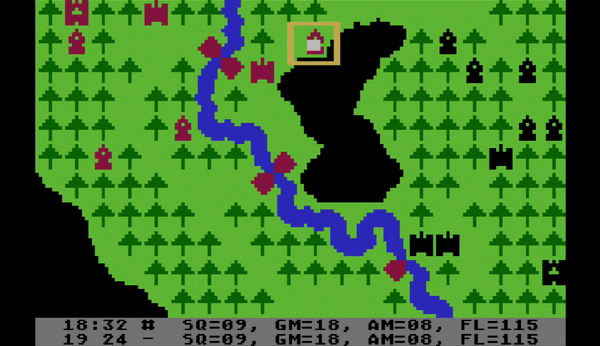
Alas, the armoured cars carry only 8 shells, and I had to use one to destroy a tree to reach my target. Two turns later, I managed to position my armoured car in an even better position with 4 possible targets, but I could only shoot twice!
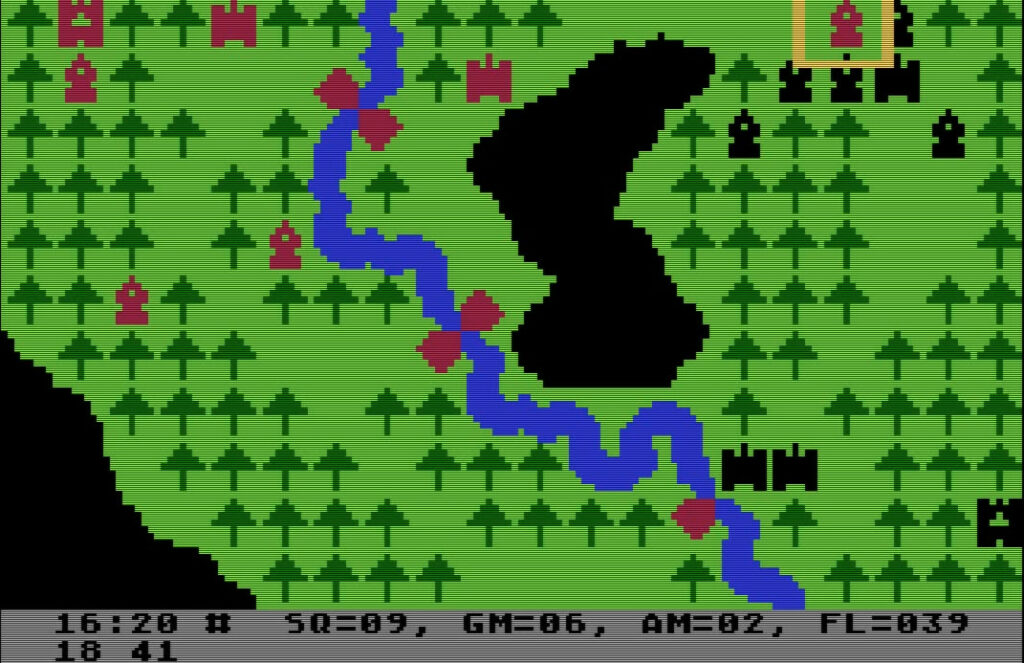
I use the same strategy with a tank; even though I only destroy one enemy armoured car I am happy with how it goes: in Combat Chess it is better to have a few healthy units than a lot of damaged units as it minimizes the amount of damage your opponent can deal to you in one turn. What’s important is how much damage you caused vs how much damage you received, and I think I dealt almost twice as much damage as I received.
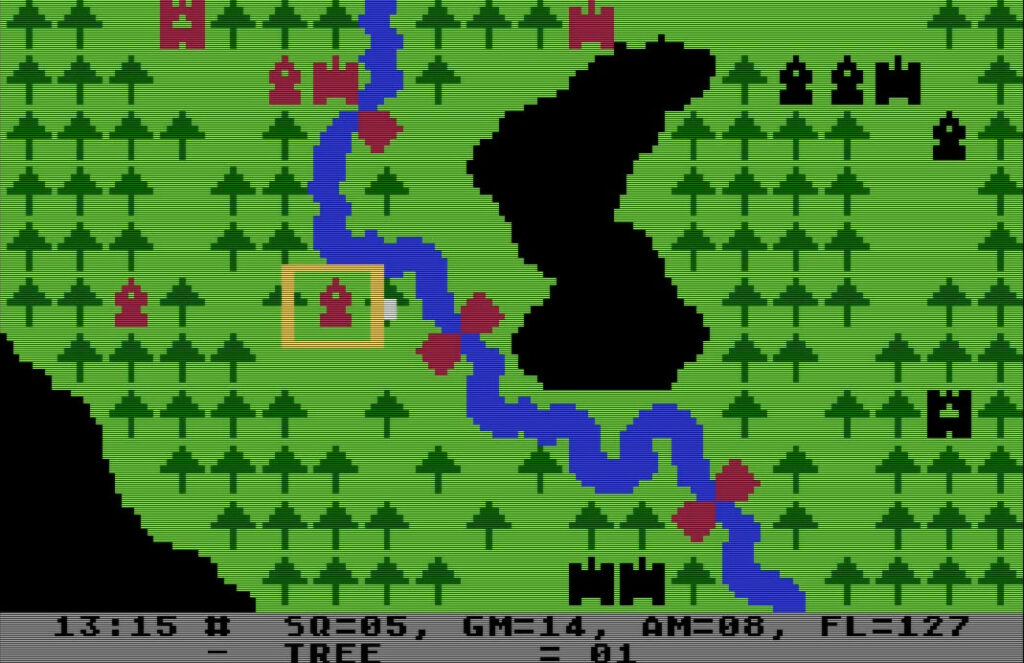
Unfortunately, this excellent performance does not last. After destroying my tank, the computer launches a lightning counter-attack, hitting 3 of my units!
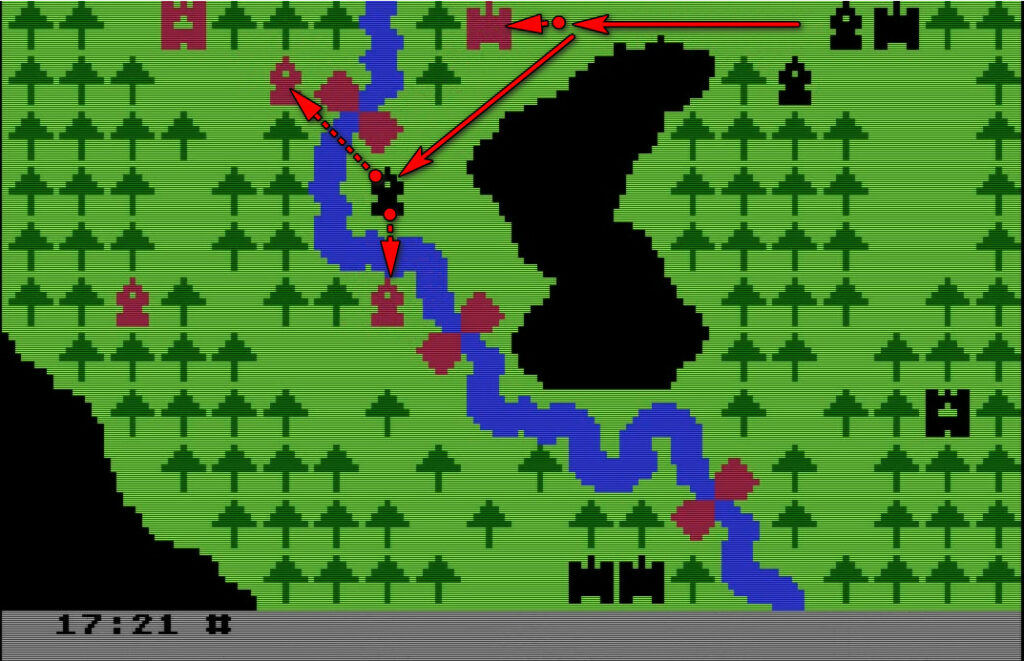
Worse: it takes me 2 turns to destroy the armoured car because I missed it twice – which means it can damage me further. When I finally remove this pest, the computer launches a new threat: a tank attack in the South!
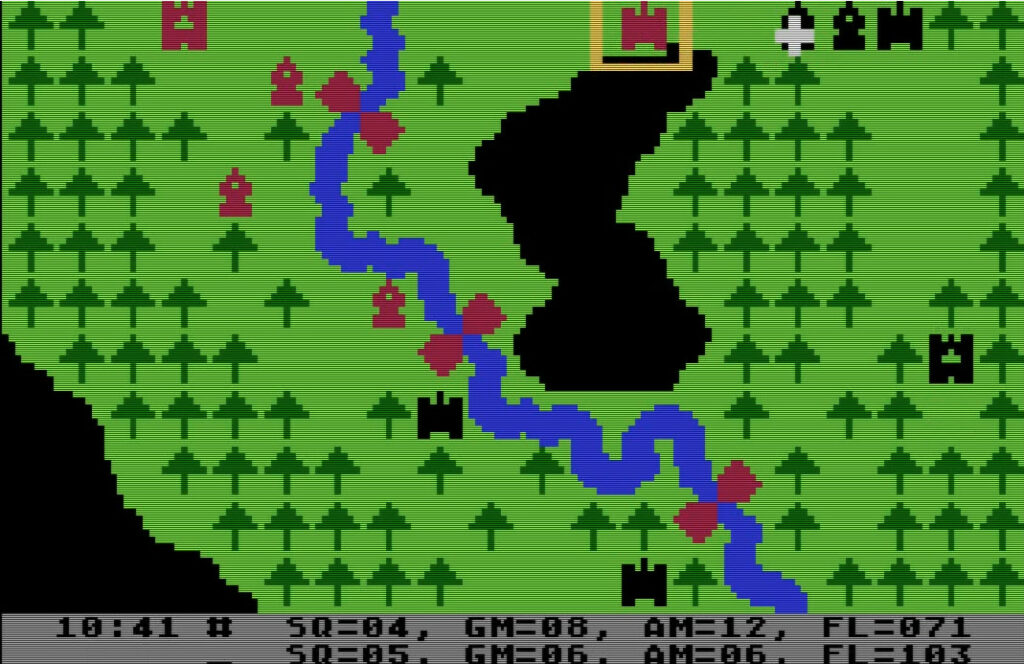
This is not ideal: low unit density means I am going to trade at 1:1 at best, which I can’t afford given the computer had a starting advantage of one armoured car and one tank. Additionally, with only three movements by turn I can’t move all my units on the two fronts out of harms’ way, and I have to sacrifice the tank near the mountain.
The game has a status report, and I don’t like what I am seeing: I am down to 56 total health points against 98!
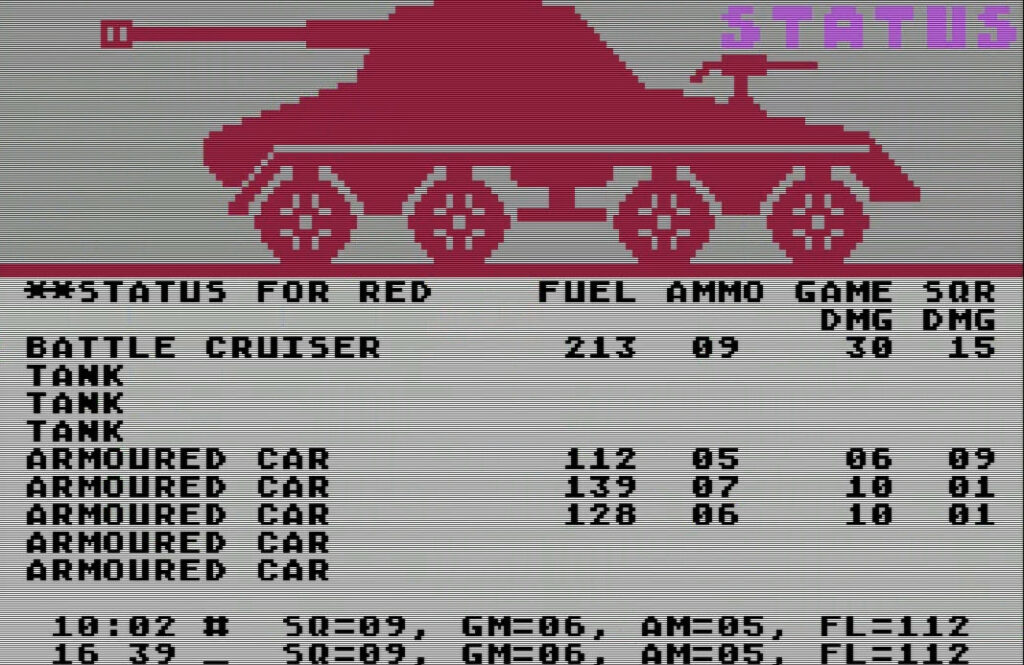
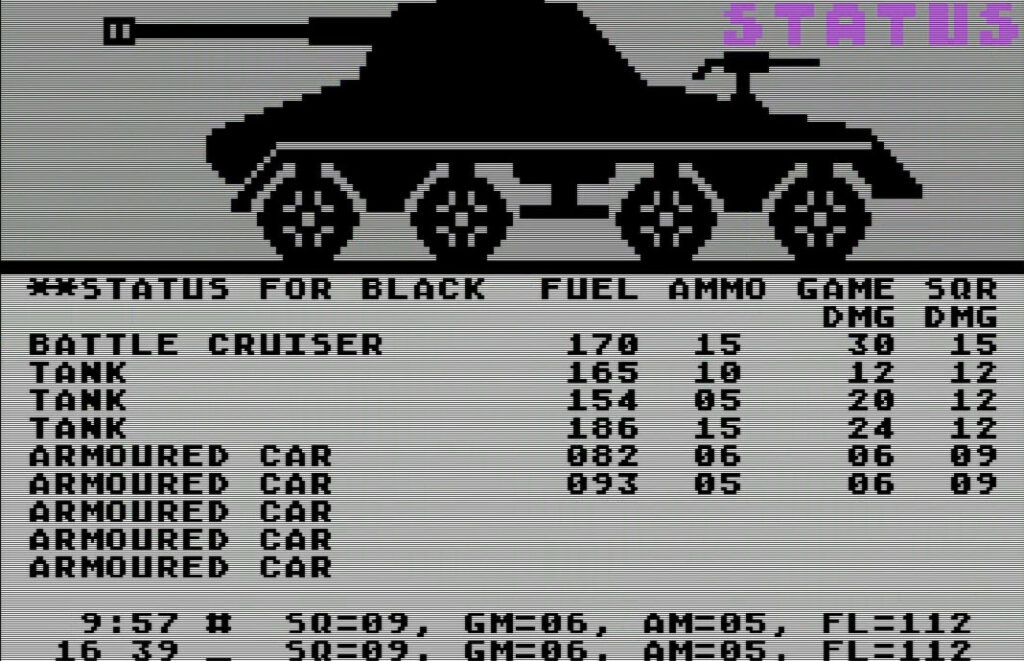
When the dust clears, I am down to one armoured car and my battle cruiser, sharing 7 shells between the two of them. I had to spend a lot to clear columns to allow my battle cruiser to hit the enemy.
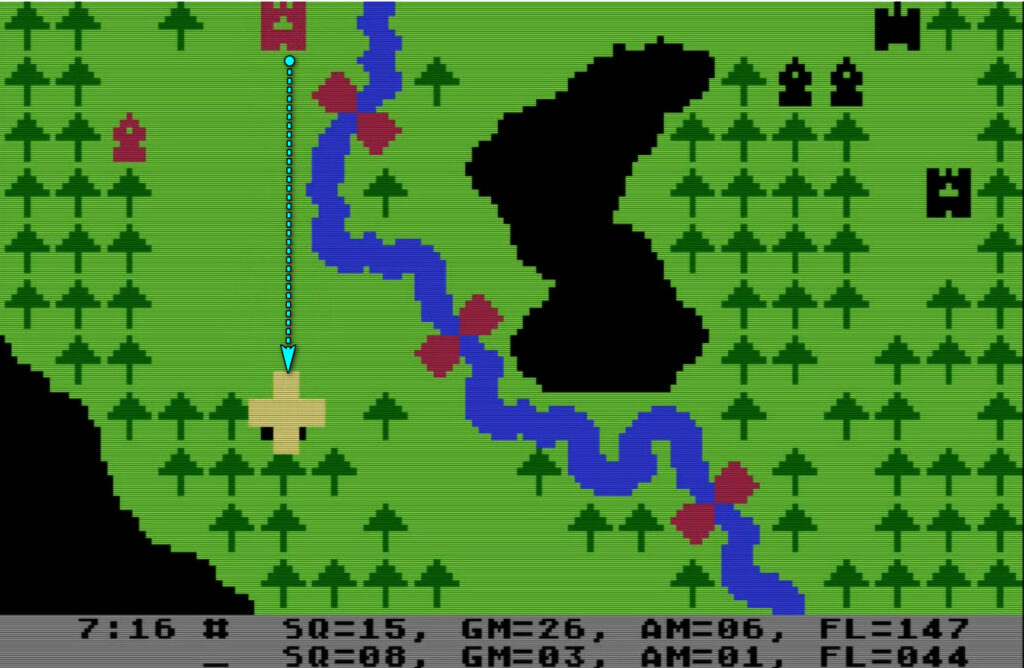
I manage to empty the two last shells of my armoured car on the enemy, and then it’s only my battle cruiser, its five remaining shells and 4 enemy pieces trying to cross the Northern pass.
The computer sends its last tank first, and I destroy it easily with long-range shots.
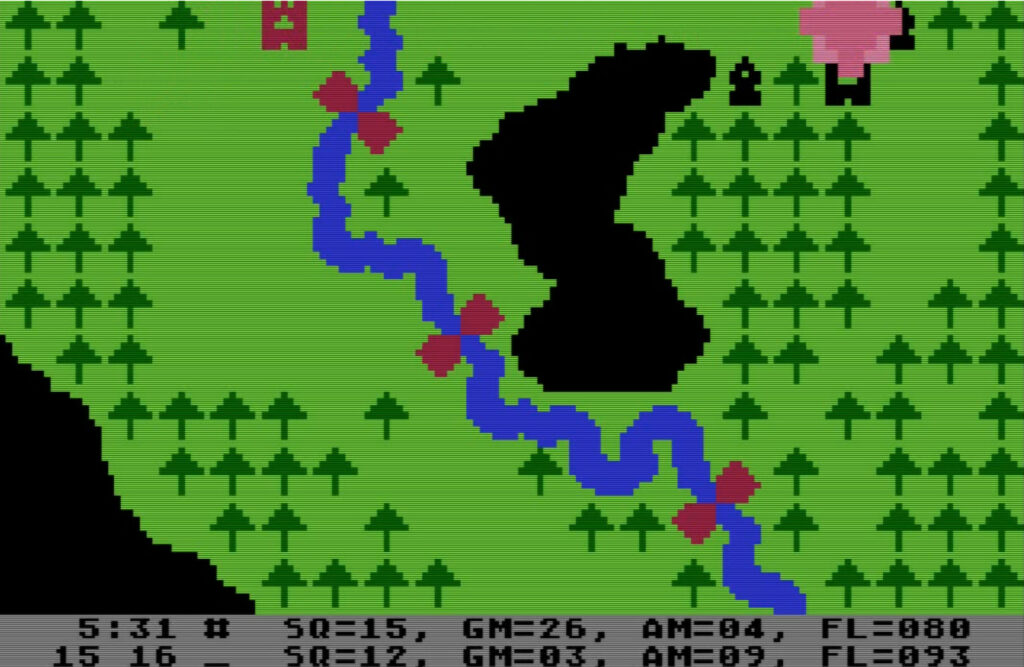
After that, the computer sends its battle cruiser. I have only 3 shells left at this point and it has 30 HPs, so I can’t destroy it. It looks like it is lost…
… but it is not. Not completely anyway. The enemy battle cruiser runs out of fuel in the middle of the pass, blocking the two armored cars behind it. I am almost out of fuel myself and I stop moving, the computer does not either, and the game ends in a stalemate!

I reckon the computer could have won if it had used its two armored cars to attack from the South, but I am happy to snatch a stalemate from the jaws of defeat!
Ratings & Review
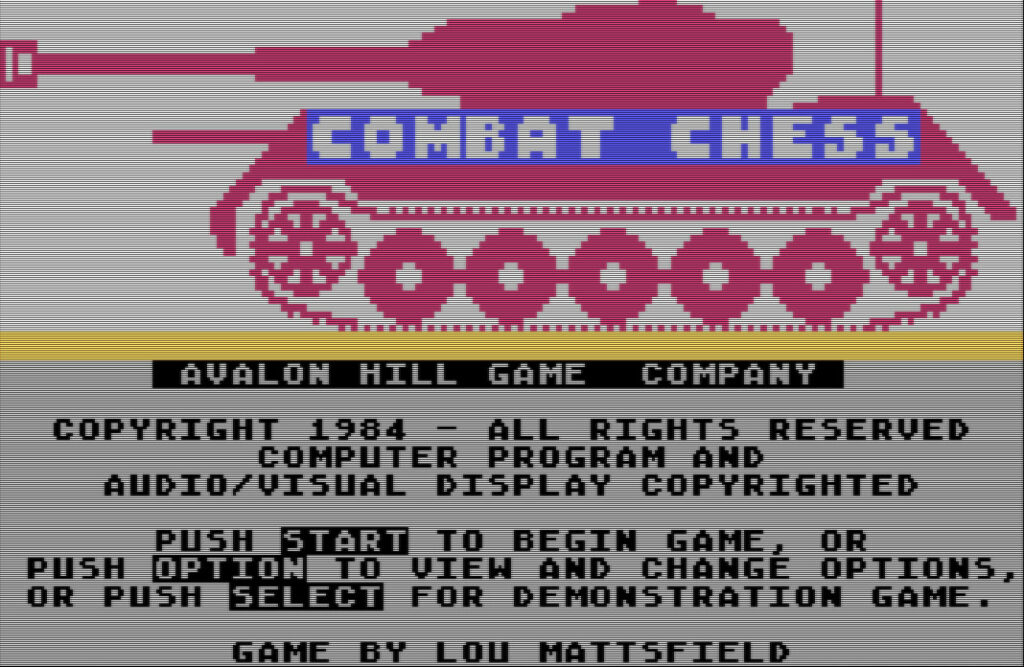
Combat Chess by Lou Mattsfield, published by Avalon Hill, USA
First release: August 1984 on Atari 8-bits
Genre: A hybrid no one wanted between boardgame and tactical
Average duration of a campaign : 30 minutes
Total time played: 2 hours
Complexity: Easy (1/5)
Rating: Obsolete
Ranking at the time of review: 87/136
Combat Chess is an Atari exclusive released without any advertising by Avalon Hill in the third quarter of 1984 and designed by Lou [Louis] Mattsfield, a man who has the privilege of not having any hits on Archive.org and only 3 (all related to Combat Chess) in Google – this is all I can say about the background of the game. Amusingly, while I was looking into this game, I found ads for an unrelated (two-players only) Combat Chess on TRS-80, so this amateur game had more visibility than the Avalon Hill’s title.
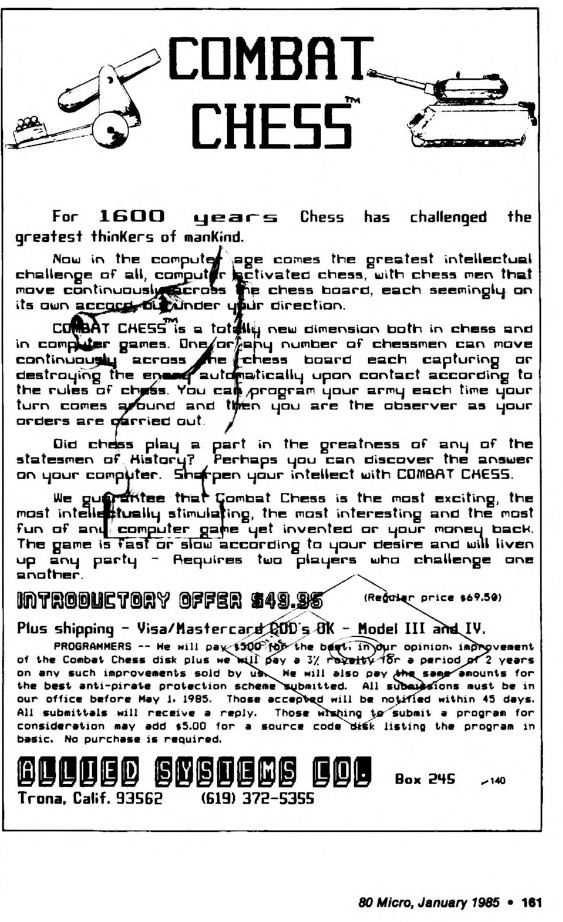
A. Presentation: Very poor.
B. UI, Clarity of rules and outcomes: Poor. The manual gives you superfluous information on pointless features (in particular a full table for the damage received by the terrain “below” units when the latter is attacked – useless given terrain does not provide cover) but miss the most important rules: the fact that you can shoot as many times as you want but once per target during your turn, or the impact on terrain on movement and fuel consumption. At least the in-game UI is well-done.
C. Systems: Very poor, and it did not have to be. Mattsfield was unable to make some key choices when designing his game. For instance, Combat Chess has two “shoot options” (whether you have to do all your shots before your first movement or not) and lets you choose the number of movements every turn – I played with the default settings.
Even if I assume that the default settings are the “normal” way to play, my gut-feeling is that Mattsfield never understood Chess. Boardgames like Chess, Checkers or Go are great because they’re deterministic – when you beat your opponent you know you’ve not been lucky but you have outsmarted them and typically could see further ahead than they did. But in Combat Chess you can’t really see much ahead: attacks can miss their target and the fuel consumption table is too complex to plan around it.

Of course, the game won’t satisfy the wargaming aficionados either, due to the weirdness of the “shoot as many times as you want, once per target” rule – and adding trees on the chessboard only makes the artificiality of the whole ruleset more obvious.
D. Scenario design & balancing: Quite good. I have to give some credit here – the few customization options are enough to drastically change the gameplay, the 9 maps are very different and the AI is solid – the latter possibly due to how unintuitive the ruleset is for a human player.
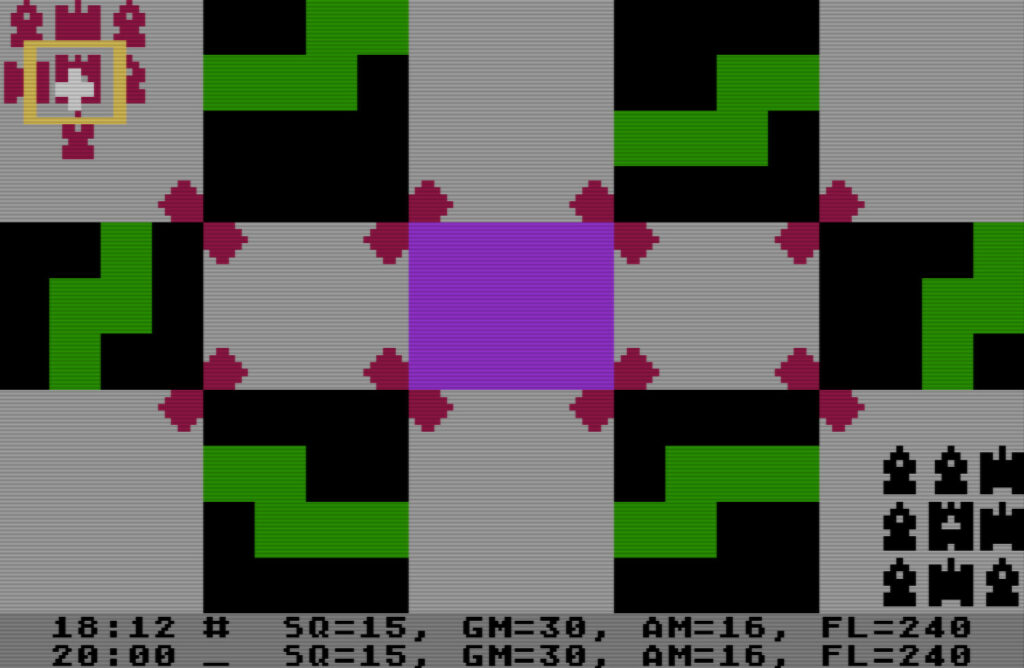
Overall, I found the open abstract maps much better than the realistic maps: the ruleset shines when movements and attacks are unimpeded by trees and when the players don’t have to think about their fuel.
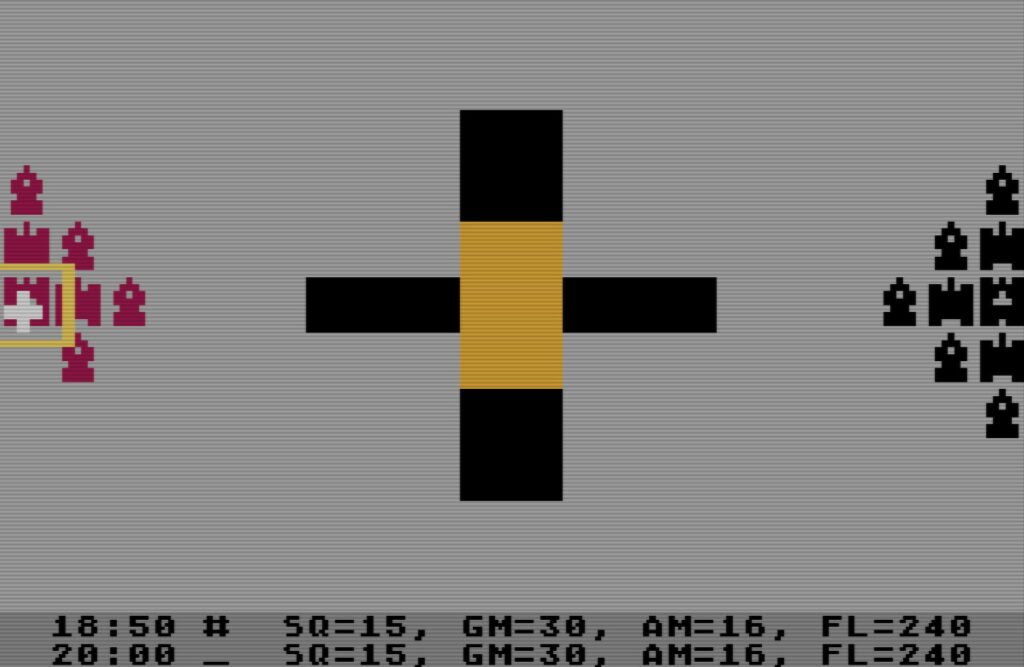
E. Did I make interesting decisions? Yes, every turn. In spite of the many flaws of Combat Chess, you need to think about every move – a single positioning mistake can cost you dearly.
F. Final rating: Obsolete. Combat Chess is a poor execution on a concept that I don’t think could have worked in the first place, at least commercially. The game would have been much better by streamlining features: fuel, hit-chance and possibly ammo, but if it had done so, it would have lost its “wargame” attribute (except the theme) without satisfying anyone who wanted to play Chess.
Reception
As I explained, the game was released without fanfare and went deservingly unnoticed. So unnoticed, actually, that it does not have a Mobygames entry and cannot even be found on the list of Avalon Hill video games on Wikipedia! I could only find one review of Combat Chess, penned by Patrick J Kelley in the November 1985 issue of Analog Computing. His introduction is amusing with the 2024 hindsight: “It must be getting pretty tough to be a computer game designer these days. After all these years of variation upon variation, and looking at the countless products of other designers, it seems to me that it would be next to impossible to come up with an original game”. The rest of the review includes more complaints (graphics, documentation, fuel management) than praises (“decent” AI, clear UI), and concludes thus: “Combat Chess is certainly not a great game, but it grows on you and will do until something better comes along.“
Now that I’ve got my computer repaired at last, something better will come along in the next update: Rome and the Barbarians.
One Comment
Fascinating stuff. I was expecting something like the later “Battle Chess” not this. I can see some of the things they were trying to do… but as you say it doesn’t work.
Nice to have choice of maps though!